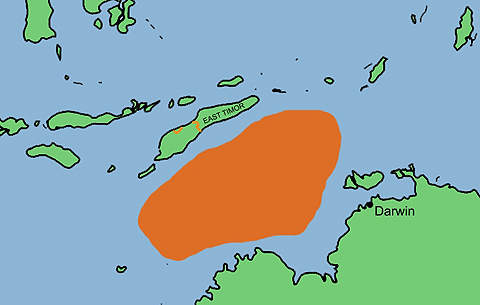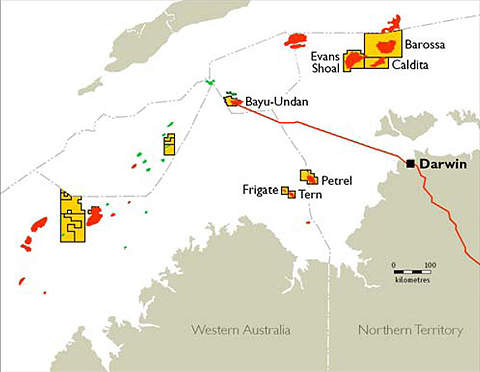The Bonaparte Liquefied Natural Gas (LNG) project was initially planned to cover the deployment of a floating, production, storage and offloading (FPSO) LNG facility in the Bonaparte Basin in the Timor Sea, off the northern coast of Australia. The facility would be used to develop the Petrel, Tern and Frigate natural gas fields. Water depths in the area range from 50m to 100m.
In August 2009, GDF Suez and Santos had formed a partnership to develop the project. Under the terms of the partnership, GDF Suez acquired 60% ownership of the three fields from Santos for $200m.
Santos and GDF Suez, however, announced in June 2014 that the front end engineering and design (FEED) phase of the project will not be taken forward for the time being and instead other potential development options, including a pipeline connection to Darwin, rather than the FLNG will be explored. The decision was taken because the FLNG technology doesn’t meet the commercial requirements of both the partners.
GDF Suez Bonaparte, a subsidiary of GDF Suez, will be the operator of the project. The final investment decision on the project is, however, expected to be reached in the second half of 2015. First production is expected in 2019.
Partners of the Petrel field include GDF Suez (60%), Santos (35%) and Origin Energy (5%). GDF Suez and Santos own 60% and 40%, respectively, in the Tern and Frigate fields.
The project will help GDF Suez expand its presence in the Australian exploration and production sector. It will use Santos’s expertise in E&P and GDF Suez’s technical capabilities in LNG from floating facilities.
GDF Suez Bonaparte will market all the LNG produced by the project, which will increase GDF Suez’s gas reserves by 20%.
It will also help to expand GDF Suez’s LNG supplies to Asia Pacific, which accounts for two thirds of global LNG demand.
Bonaparte discovery
The Petrel field was discovered by Arco Australia with the drilling of the Petrel 1 well in 1969. The field lies in the NT / RL1 and WA-6-R lease area, and five wells have been drilled to date.
The Tern field was discovered by Arco Australia in 1971 by drilling the Tern 1 well. The field lies 50km from the Petrel field in the WA-27-R lease area. Exploration activities at the field included drilling five wells.
Santos discovered the Frigate gas field in 2008 with the drilling of the Frigate Deep 1 well.
Bonaparte geology
The Petrel, Tern and Frigate fields lie in the Timor / Bonaparte basin, a major gas-producing area offshore Australia. The main reservoir of the Petrel field is of the Cape Hay formation belonging to the Hyland Bay Subgroup.
Gas is found in the Pearce and Torrens formations. The gas to condensate ratio ranges between 0.5 and nine barrels per million standard cubic feet.
The Tern field reservoir is of the Tern formation of the Hyland Bay Subgroup. Gas is contained in the Dombey and Cape Hay formations.
Gas in the Frigate field is found in the Mount Goodwin and Tern formations.
Reserves
The Petrel field reservoir is estimated to hold 970 billion cubic feet (bcf) of gas and 5.9 million barrels of condensate.
Recoverable reserves of the Tern field are estimated at 468bcf of gas and 5.7 million barrels of condensate, while the Frigate field is estimated to contain 100bcf of gas.
The project is expected to recover 360 million barrels of oil equivalent from the fields.
Bonaparte development
The Bonaparte project covers the development of the three fields. The FPSO facility, if opted for, will have the capacity to process two million tonnes of LNG per year and will be installed in the northern region of the Bonaparte basin.
The FPSO would be developed based on in-house design and engineering works conducted by GDF Suez. International partnerships would also be formed in the development of the FPSO.
The government granted environmental approval to the project in October 2012. The initial development phase of the project would be for a period of three years.
Contracts
In January 2011, GDF Suez contracted Granherne, a subsidiary of KBR, to carry out the upstream pre-FEED study for the project. The scope of work includes subsea engineering, field development planning, flow assurance and related engineering studies.
ICN Gateway is the contracting and procurement consultant for the project. DORIS Engineering won the midstream pre-FEED contract for the project.









